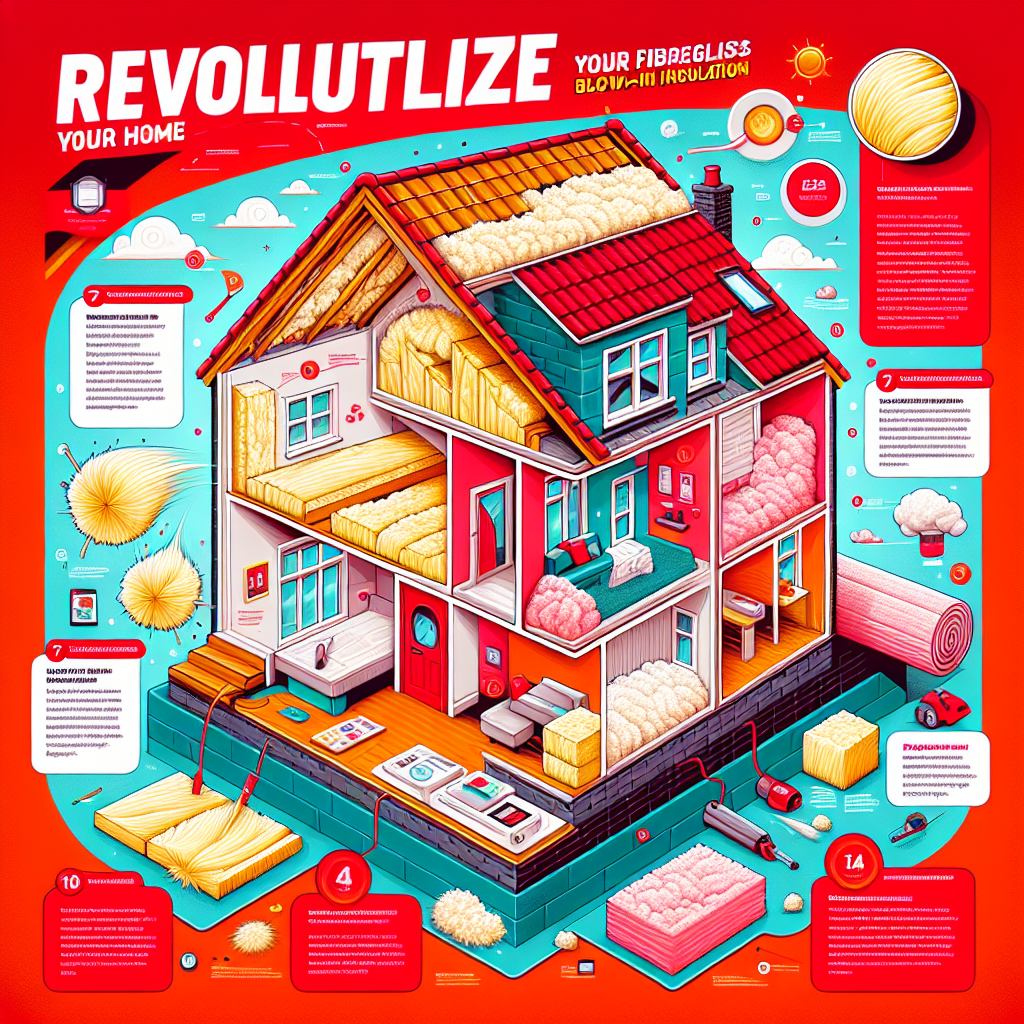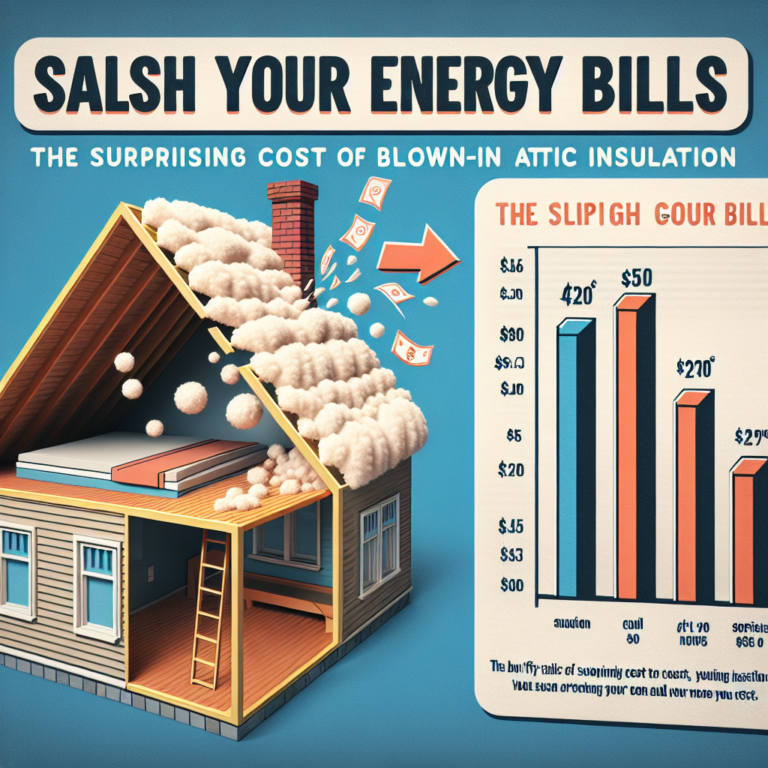-
Table of Contents
“Efficiently insulate your home with blown in cellulose – the eco-friendly choice for comfort and savings.”
Introduction
Blown-in cellulose insulation is a type of insulation material that is commonly used in homes and buildings to improve energy efficiency and reduce heating and cooling costs. It is made from recycled paper fibers that are treated with fire retardants and insect repellents, making it a safe and environmentally friendly option for insulation. This type of insulation is typically installed by blowing it into walls, attics, and other hard-to-reach areas, providing a seamless and effective barrier against heat transfer. In this introduction, we will explore the benefits and uses of blown-in cellulose insulation.
Benefits of Blown In Cellulose Insulation
Blown in cellulose insulation is a popular choice for homeowners looking to improve the energy efficiency of their homes. This type of insulation is made from recycled paper and is blown into walls, attics, and other spaces using specialized equipment. It has become a preferred option for many due to its numerous benefits, which we will explore in this article.
One of the main benefits of blown in cellulose insulation is its high R-value. R-value is a measure of an insulation material’s ability to resist heat flow. The higher the R-value, the better the insulation. Blown in cellulose has an R-value of 3.2-3.8 per inch, which is higher than other types of insulation such as fiberglass or foam. This means that it provides better thermal resistance, keeping your home warmer in the winter and cooler in the summer.
Another advantage of blown in cellulose insulation is its ability to fill small gaps and crevices. Unlike traditional batt insulation, which comes in pre-cut sizes, blown in cellulose can be blown into tight spaces, ensuring that every nook and cranny is filled. This makes it an excellent choice for older homes with irregularly shaped walls and attics. The tight seal created by blown in cellulose also helps to prevent air leakage, reducing drafts and improving overall energy efficiency.
In addition to its insulating properties, blown in cellulose is also a more environmentally friendly option. As mentioned earlier, it is made from recycled paper, making it a sustainable choice for insulation. It also requires less energy to produce compared to other types of insulation, further reducing its environmental impact. Additionally, blown in cellulose is treated with borate, a natural fire retardant, making it a safer option for your home.
One of the most significant benefits of blown in cellulose insulation is its soundproofing capabilities. The dense and fibrous nature of this insulation material helps to absorb sound waves, reducing noise transfer between rooms. This is especially beneficial for homeowners living in noisy areas or those with home theaters or music rooms. Blown in cellulose can also help to reduce outside noise, creating a more peaceful and comfortable living environment.
Another advantage of blown in cellulose insulation is its resistance to mold and pests. The borate treatment not only acts as a fire retardant but also helps to prevent the growth of mold and mildew. This is especially important for homes in humid climates where mold growth is a common issue. Additionally, the dense nature of blown in cellulose makes it difficult for pests to burrow through, providing an extra layer of protection for your home.
Finally, blown in cellulose insulation is a cost-effective option for homeowners. While the initial cost may be slightly higher than other types of insulation, the long-term savings on energy bills make it a worthwhile investment. The tight seal created by blown in cellulose helps to reduce energy waste, resulting in lower heating and cooling costs. It also has a longer lifespan compared to other types of insulation, meaning you won’t have to replace it as frequently.
In conclusion, blown in cellulose insulation offers numerous benefits for homeowners. From its high R-value and ability to fill small gaps to its environmentally friendly and soundproofing properties, it is a top choice for those looking to improve the energy efficiency and comfort of their homes. Its resistance to mold and pests and cost-effectiveness make it a practical and long-term solution for insulation needs. Consider blown in cellulose insulation for your next home improvement project and reap the benefits for years to come.
Comparison of Fibreglass and Cellulose Blown In Insulation

Insulation is an essential component of any building, whether it is a residential or commercial structure. It helps to regulate the temperature inside the building, keeping it warm in the winter and cool in the summer. There are various types of insulation available in the market, and one of the popular options is blown-in cellulose insulation.
Blown-in cellulose insulation is made from recycled paper products, such as newspapers, cardboard, and other paper waste. These materials are treated with fire-retardant chemicals and then shredded into small pieces. The insulation is then blown into the walls, attics, and other spaces using a special machine. This method of installation makes it an ideal choice for retrofitting existing buildings, as it can be easily blown into hard-to-reach areas.
One of the main advantages of blown-in cellulose insulation is its high R-value. R-value is a measure of an insulation material’s ability to resist heat flow. The higher the R-value, the better the insulation’s performance. Blown-in cellulose insulation has an R-value of 3.2 to 3.8 per inch, which is higher than that of fibreglass insulation, which has an R-value of 2.2 to 2.7 per inch. This means that blown-in cellulose insulation provides better thermal resistance, making it more effective in keeping the building’s temperature regulated.
Another advantage of blown-in cellulose insulation is its ability to fill in gaps and voids. Unlike fibreglass insulation, which comes in pre-cut batts or rolls, blown-in cellulose insulation can be blown into any space, ensuring a tight and complete coverage. This makes it an excellent choice for insulating irregularly shaped areas, such as attics with sloped ceilings or walls with pipes and wires running through them. The ability to fill in gaps also helps to reduce air leakage, which can significantly impact a building’s energy efficiency.
In terms of cost, blown-in cellulose insulation is generally more affordable than fibreglass insulation. This is because the materials used to make it, such as recycled paper, are readily available and inexpensive. Additionally, the installation process is relatively quick and straightforward, which can save on labor costs. However, it is essential to note that the cost of insulation also depends on the size of the building and the amount of insulation needed.
One of the main drawbacks of blown-in cellulose insulation is its potential to settle over time. As the insulation is made from shredded paper, it can compress and settle, reducing its effectiveness. This can be prevented by using a dense pack installation method, where the insulation is blown in at a higher density, minimizing the risk of settling. It is also crucial to hire a professional installer who has experience with blown-in cellulose insulation to ensure proper installation.
On the other hand, fibreglass insulation is known for its durability and ability to maintain its R-value over time. It does not settle or compress, making it a long-term investment. However, fibreglass insulation can be challenging to install, especially in hard-to-reach areas, and it requires protective gear due to its small glass fibers, which can irritate the skin and lungs.
In conclusion, blown-in cellulose insulation offers several advantages over fibreglass insulation, such as higher R-value, better coverage, and affordability. However, it is essential to consider the potential for settling and hire a professional installer for proper installation. Ultimately, the choice between the two types of insulation depends on the building’s specific needs and budget. It is always recommended to consult with a professional to determine the best insulation option for your building.
The Process of Installing Blown In Cellulose Insulation
Blown in cellulose insulation is a popular choice for homeowners looking to improve the energy efficiency of their homes. This type of insulation is made from recycled paper and is blown into walls, attics, and other spaces using specialized equipment. It is known for its effectiveness in reducing energy costs and improving the overall comfort of a home. In this article, we will discuss the process of installing blown in cellulose insulation and why it is a great option for homeowners.
The first step in installing blown in cellulose insulation is to prepare the space. This involves clearing any obstacles or debris from the area where the insulation will be installed. It is important to ensure that the space is clean and free of any moisture or mold. This will ensure that the insulation is installed properly and will not be compromised by any existing issues.
Next, the insulation material is prepared. Blown in cellulose insulation is made from recycled paper that has been treated with fire-retardant chemicals. This makes it a safe and environmentally friendly option for insulation. The material is then broken down into small pieces and loaded into a machine called a blower. The blower is used to distribute the insulation evenly throughout the space.
Once the insulation material is prepared, the installation process begins. The blower is connected to a long hose that is inserted into the space where the insulation will be installed. The installer will then use the blower to distribute the insulation evenly throughout the space. This process requires skill and precision to ensure that the insulation is evenly distributed and reaches all areas of the space.
One of the benefits of blown in cellulose insulation is its ability to fill small gaps and crevices. This makes it a great option for older homes or spaces with irregular shapes. The installer will use a special technique to ensure that the insulation reaches all areas, including corners and tight spaces. This is important for maximizing the effectiveness of the insulation and reducing any potential air leaks.
As the insulation is blown into the space, it will expand and settle, creating a dense layer of insulation. This layer will help to prevent heat loss and keep the home at a comfortable temperature. The installer will continue to monitor the process to ensure that the desired thickness and coverage is achieved.
Once the installation is complete, the installer will clean up any excess insulation and seal any openings or gaps. This will help to prevent any air leaks and ensure that the insulation remains in place. The entire process can usually be completed in a few hours, depending on the size of the space.
In conclusion, blown in cellulose insulation is a highly effective and efficient option for homeowners looking to improve the energy efficiency of their homes. The process of installing this type of insulation involves preparing the space, loading the insulation material into a blower, and distributing it evenly throughout the space. It is important to hire a professional installer who has experience with this type of insulation to ensure that it is installed properly and provides maximum benefits. With blown in cellulose insulation, homeowners can enjoy a more comfortable and energy-efficient home.
Q&A
Q: What is blown in cellulose insulation?
A: Blown in cellulose insulation is a type of insulation material made from recycled paper fibers that is blown into walls, attics, and other spaces to provide thermal and sound insulation.
Q: How is blown in cellulose insulation installed?
A: Blown in cellulose insulation is installed using a special machine that blows the insulation material into the desired space. It can be installed in both new and existing buildings.
Q: What are the benefits of blown in cellulose insulation?
A: Blown in cellulose insulation is known for its high R-value, which means it provides excellent thermal insulation. It is also eco-friendly, as it is made from recycled materials, and can help reduce energy costs by keeping buildings well-insulated. Additionally, it can help reduce noise levels and is resistant to fire and pests.
Conclusion
In conclusion, blown in cellulose insulation is a highly effective and eco-friendly option for insulating homes and buildings. It is made from recycled materials and has a high R-value, providing excellent thermal resistance. Its ability to fill small gaps and crevices makes it a great choice for improving energy efficiency and reducing utility costs. Additionally, blown in cellulose insulation is non-toxic and does not release harmful chemicals into the air. Overall, it is a cost-effective and environmentally friendly solution for insulating any space.






